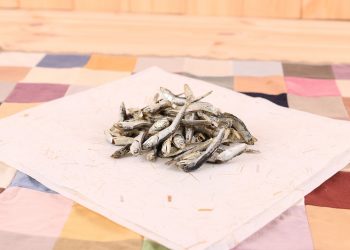Did you know that what you eat can play a significant role in your joint health? If you’re like me, you might have experienced the occasional stiffness or discomfort in your joints. I’ve often wondered: could my diet be the culprit—or the cure? Well, it turns out that incorporating certain foods, particularly omega-3-rich fish like salmon, can be a game-changer.
Salmon is not just a treat for your taste buds; it’s also a powerhouse for joint health. Packed with omega-3 fatty acids, salmon has been shown to help reduce inflammation and may even alleviate symptoms of arthritis. So, if you’re looking to boost your joint health while enjoying delicious meals, here are five scrumptious salmon recipes that you’ll want to try.
Contents
1. Lemon Garlic Salmon with Asparagus
Why It’s Great for Joint Health
Lemon and garlic aren’t just flavorful additions; they also have anti-inflammatory properties. Garlic contains compounds that can help reduce inflammation, while lemon adds a refreshing zing and vitamin C, which is essential for collagen production.
Ingredients
- 4 salmon fillets
- 2 tablespoons olive oil
- 3 cloves garlic, minced
- Juice of 1 lemon
- Zest of 1 lemon
- Salt and pepper to taste
- 1 bunch asparagus, trimmed
Instructions
- Preheat your oven to 400°F (200°C).
- In a small bowl, mix olive oil, minced garlic, lemon juice, and zest.
- Place salmon fillets and asparagus on a baking sheet. Drizzle the lemon-garlic mixture over both.
- Season with salt and pepper.
- Bake for 12-15 minutes or until the salmon flakes easily with a fork.
Pros and Cons
Pros: Quick to prepare, packed with flavor, and loaded with nutrients.
Cons: If you don’t like garlic, you might want to skip this one!
2. Salmon Quinoa Bowl
Why It’s Great for Joint Health
Quinoa is a complete protein and a great source of magnesium, which is vital for muscle and joint function. Pairing it with salmon amplifies the omega-3 benefits, making this bowl a nutritional powerhouse.
Ingredients
- 1 cup quinoa
- 2 cups water
- 2 salmon fillets
- 1 avocado, sliced
- 1 cup cherry tomatoes, halved
- 1 cup spinach
- 2 tablespoons olive oil
- Salt and pepper to taste
Instructions
- Rinse quinoa under cold water, then combine it with water in a pot. Bring to a boil, then reduce heat and simmer for about 15 minutes.
- While the quinoa is cooking, season salmon with salt and pepper. Heat olive oil in a skillet over medium heat and cook salmon for about 4-5 minutes on each side.
- Assemble the bowl: place quinoa at the bottom, top with spinach, cherry tomatoes, salmon, and avocado.
Pros and Cons
Pros: Versatile, can be customized with your favorite vegetables.
Cons: Quinoa can be a bit time-consuming to cook if you’re in a hurry.
3. Salmon Tacos with Mango Salsa
Why It’s Great for Joint Health
Mango is high in vitamin C and antioxidants, both of which help fight inflammation. Plus, this dish is a fun way to enjoy salmon—who doesn’t love tacos?
Ingredients
- 2 salmon fillets
- 1 tablespoon chili powder
- 1 teaspoon cumin
- 1 tablespoon olive oil
- 4 small corn tortillas
- 1 cup diced mango
- 1/2 red onion, diced
- Juice of 1 lime
- Fresh cilantro for garnish
Instructions
- Preheat your grill or a grill pan over medium heat.
- Rub salmon with chili powder, cumin, and olive oil. Grill for about 4-5 minutes on each side.
- In a bowl, mix mango, red onion, lime juice, and cilantro to make the salsa.
- Flake the salmon and serve in corn tortillas topped with mango salsa.
Pros and Cons
Pros: Fun, easy to eat, and packed with flavor.
Cons: Grilling might not be an option for everyone, especially in colder months.
4. Creamy Salmon and Spinach Pasta
Why It’s Great for Joint Health
Spinach is rich in antioxidants and vitamins that can help combat joint inflammation. Combining it with salmon creates a creamy dish that feels indulgent yet is still healthy.
Ingredients
- 8 oz whole wheat pasta
- 2 salmon fillets
- 1 cup spinach
- 1 cup heavy cream (or a lighter alternative)
- 2 tablespoons olive oil
- 2 cloves garlic, minced
- Salt and pepper to taste
Instructions
- Cook pasta according to package instructions. Drain and set aside.
- In a skillet, heat olive oil and add minced garlic. Cook until fragrant.
- Add salmon fillets and cook for about 4-5 minutes on each side. Remove and flake.
- In the same skillet, add heavy cream and spinach. Stir until spinach wilts.
- Toss in the cooked pasta and flaked salmon. Season with salt and pepper.
Pros and Cons
Pros: Comfort food that’s also good for you.
Cons: Higher in calories due to the cream, so it’s best enjoyed in moderation.
5. Baked Salmon with Herbs and Vegetables
Why It’s Great for Joint Health
This recipe highlights the benefits of various vegetables, which are crucial for overall health and can also aid in reducing inflammation.
Ingredients
- 4 salmon fillets
- 2 cups mixed vegetables (bell peppers, zucchini, carrots)
- 2 tablespoons olive oil
- 1 teaspoon dried thyme
- 1 teaspoon dried rosemary
- Salt and pepper to taste
Instructions
- Preheat the oven to 375°F (190°C).
- Toss mixed vegetables in olive oil, thyme, rosemary, salt, and pepper.
- Place salmon fillets on a baking sheet and surround them with the vegetables.
- Bake for about 20 minutes or until the salmon is cooked through.
Pros and Cons
Pros: Simple, healthy, and a great way to use up leftover veggies.
Cons: The flavor might be too mild for some; consider adding a splash of lemon or your favorite sauce.
FAQs
1. How often should I eat salmon for joint health?
Most health experts recommend eating fatty fish like salmon at least twice a week to reap the benefits of omega-3 fatty acids.
2. Can I substitute salmon with other fish?
Yes! Fish like mackerel, sardines, and herring are also high in omega-3s and can be good alternatives.
3. What are the signs of joint inflammation?
Common signs include swelling, pain, stiffness, and reduced range of motion in the joints.
4. Are there any risks associated with eating salmon?
While salmon is generally healthy, be aware of potential mercury levels in fish. It’s best to consume a variety of fish to minimize exposure.
Conclusion
Incorporating salmon into your diet can be a delicious way to support your joint health. Whether you’re grilling, baking, or tossing it into a salad, there are countless ways to enjoy this versatile fish. The recipes above not only taste great but also provide the nutrients your body needs to combat inflammation and promote overall wellness.
So, next time you’re at the grocery store or farmers’ market, consider picking up some salmon. Your joints—and your taste buds—will thank you!
Disclaimer: This article is for educational purposes only and is not a substitute for professional medical advice. Always consult a qualified healthcare provider before making changes to your health routine.
References
- Calder, P. C. (2017). Omega-3 Fatty Acids and Inflammatory Processes: From Molecules to Man. Biochemical Society Transactions, 45(5), 1105-1115. https://doi.org/10.1042/BST20170106
- Mayo Clinic Staff. (2021). Arthritis: Symptoms and causes. Mayo Clinic. https://www.mayoclinic.org/diseases-conditions/arthritis/symptoms-causes/syc-20357186
- National Institutes of Health. (2020). Omega-3 Fatty Acids. NIH. https://ods.od.nih.gov/factsheets/Omega3FattyAcids-HealthProfessional/
Get Your FREE Natural Health Guide!
Subscribe now and receive our exclusive ebook packed with natural health tips, practical wellness advice, and easy lifestyle changes — delivered straight to your inbox.














